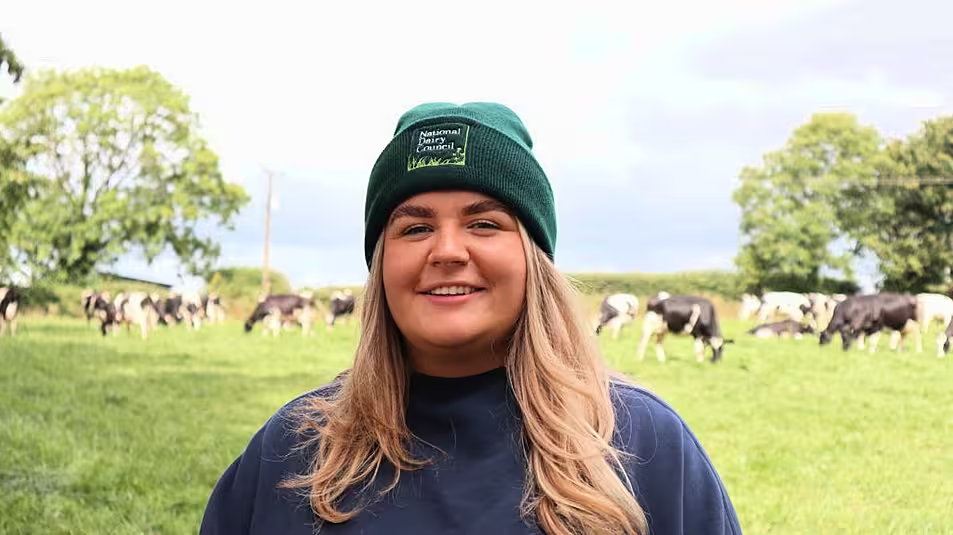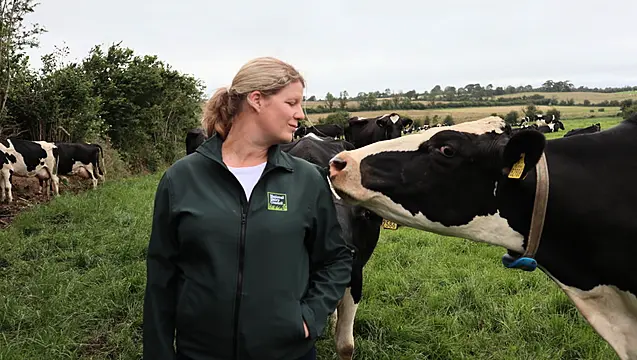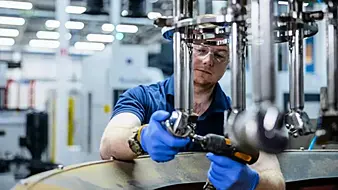Dairy farming is at the heart of Irish life; nearly 90% of the dairy products produced by 17,500 family farms (and the 60,000 people they employ) are exported to 130 countries, and contribute over €6.8 billion to the Irish economy each year.
The industry is not, however, without its challenges.
Agriculture accounts for over 37 per cent of greenhouse gas emissions in Ireland, and farmers have a major part to play in their reduction. Farming has also been identified, in an Environmental Protection Agency (EPA) report, as the major contributor to a reduction in the quality of our rivers, lakes and estuaries.
The Climate Action Act 2021 requires agriculture to reduce its emissions by 25% by 2023 and the EU Water Framework Directive requires all EU states to achieve ‘good’ status in all waterways by 2027.
For the dairy industry, environmental sustainability is a vital concern. Across the country, farmers are employing innovative technologies and practices that are designed to offset agriculture’s environmental footprint, both in terms of GHG emissions and water quality impacts. The goals are challenging, but the industry is making strong progress.
Nicole Keohane farms alongside her parents John and Anne in Innishannon, County Cork. “We’re currently milking 90 cows, a typical Irish family farm by all means,” she says.

The 25-year-old currently combines part-time farming with her studies for a M.Sc. with her work as a researcher for an animal health company.
“Between Monday and Friday you might catch me in the laboratory, trying my hand at a bit of molecular biology, on one of my trial farms collecting milk samples, or in the library.
“On the weekends, I’m mostly found at home on the farm; milking cows, looking after calves, anything to do my part.”
Nicole caught the farming bug a little later than most, she explains. “My grandparents have been the custodians of our land for the past 40 years, and I have early childhood memories of feeding the calves with my grandfather, peering in through the door to watch my grandmother in the milking parlour, and a tractor journey here and there. It wasn’t until I was around sixteen that I even milked my first cow. But once I had, I was hooked.”
Nicole typifies a new generation of farmers for whom scientific innovation and ancient traditions can happily co-exist. Young farmers currently represent 6% of the total farming cohort in Ireland. Nicole would like to see that number improve and feels that spreading her passion for regenerative agriculture and speaking out on the efforts farmers are making to tackle climate change challenges can encourage a new generation into the industry.
“Agriculture has been tasked with reducing our carbon emissions by 25% by 2030,” she says. “Farmers are actively seeking solutions and implementing them where we can. There’s a huge focus on breeding strategies, resulting in higher yielding, longer lasting and healthier cows. We can produce more dairy per cow, which is far more emissions-efficient.
“The plants cows graze have been reconsidered. Species such as clover, plantain, chicory require far less artificial nitrogen, and they reduce the amount of artificial fertilisers required. We have embraced technology to track a cow’s health and welfare and record grass growth, and we’re using GPS systems to ensure efficient spreading of fertiliser.
“Dairy farmers strive to do better, to ensure that there is a future on the farm for the next generation.”

Miriam says that sustainable farming starts from the ground up. “We spread all of our slurry with low emissions spreading techniques, and we use low-emission fertiliser,” she says. “We have a nutrient management plan, so last year we had soil samples taken across the entire farm to determine what nutrients were needed and in what areas. We tailor our fertiliser programme to suit exactly what is required, so there is no excess of anything being used.”
Miriam refers to new regulations, entitled the ‘European Union Good Agricultural Practice for Protection of Waters Regulations 2022 Statutory Instruments S.I. No. 113 of 2022′ and says that while these regulations are instructive, they do not affect their farm in Strokestown as they are already mindful of slurry spreading methodologies.
“We are always checking the weather forecast,” she says. “Slurry is a valuable resource, so we don’t want to be wasting any of it, and we don’t want any of it to go astray.
“We want to make sure that all of it is growing more grass. We would be very mindful of how, when and where we spread our slurry.”
Miriam says she would be delighted for any of her four children to pursue a career in agriculture. “I know they are young - 14, 12, 8 and nearly 6 - and I would be fairly certain even at this stage that 3 of them will probably pursue careers in agriculture,” she says.
“I think it’s a great way of life, and they have such a grá for it already. You know it’s something that’s in you. It’s not something that you can buy or necessarily learn. It’s the love of the land and a vocation rather than a career. I would be absolutely delighted to see my children following in our farming footsteps.”
Shane Fitzgerald farms in Portlaw in Co Waterford with his father John and fiancée Kate. The family farms 200 dairy cows on grass and Fitzgerald describes their efforts as a “balancing act”.

“While the political goalposts keep shifting, we are committed to producing high-quality milk in as environmentally-friendly a manner as possible. On one hand we are being incentivised to protect biodiversity, and yet the milk production system is not being adequately supported. There are challenges, but there are also opportunities and, with the right supports, we can encourage the next generation of farmers coming through to drive sustainable change.”
“Young people represent the future of farming,” Fitzgerald says. “We are aware of the consequences of the actions we take today. As a young dairy farmer, I certainly want to ensure that our environment is protected for the next generation.”
Fitzgerald is a National Dairy Council ambassador, one of a group of dairy farmers for whom spreading a sustainable message is second nature. His family has used protected urea as a fertiliser on the farm for four years now. “It’s a safer product,” he says, “which is more environmentally friendly and less prone to leaching into waterways.”
Fitzgerald also uses a trailing shoe to spread slurry, which results in fewer ammonia emissions when compared to the use of a splash plate.
“Our challenge is to balance the sustainability priorities alongside the human element and the production element of dairy farming,” Fitzgerald says. “And I’d love the public to better understand the balancing act we are trying to achieve.”








